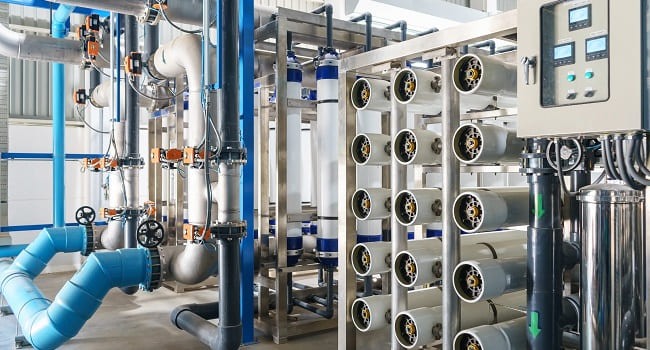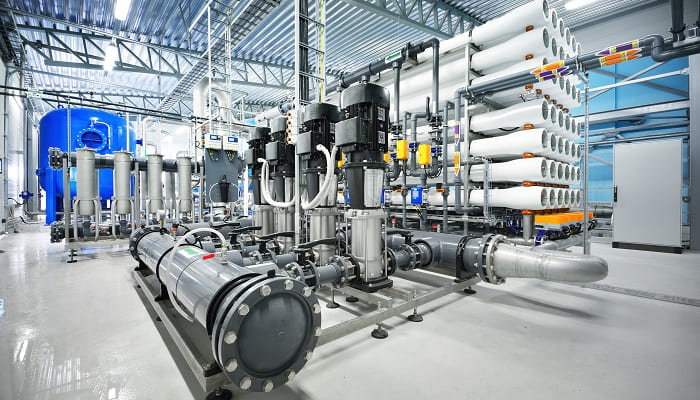Have you ever wondered how clean drinking water is produced? Reverse osmosis (RO) normalization is utilized to achieve this purpose. It’s crucial in producing safe drinking water by eliminating impurities. But what is it, and how does it work?
To further understand the process, this feature will provide an in-depth analysis of RO normalization, its importance, and its implications. Read on.
What Is RO Normalization?
RO normalization is used in water treatment systems. It reduces dissolved solids, salts, and other unwanted substances in water supplies. The process involves pushing water through a membrane that filters out contaminants while allowing clean drinking water to pass through. This creates purified water with lower concentrations of pollutants than what was originally present.
The RO process creates pressure that forces the incoming supply of untreated water against a semi-permeable membrane. The pores on this membrane are small enough so that most impurities cannot pass through them. As such, only clean drinking water can get past these barriers and into the filtered product stream. Any remaining particles or contaminants remain trapped on one side of the membrane and become discharged as wastewater during backwashing cycles when needed.
How Does RO Normalization Work?
RO normalization uses reverse osmosis to reduce the amount of dissolved minerals in the water. The result is purer, healthier water that can be consumed safely and used for many applications.
The RO normalization process starts with pretreatment filtering, which helps remove large sediments from the source water before it reaches the membrane. Once the pretreatment filter has done its job, the contaminated water passes through multiple stages of filtration under pressure until it meets set standards for purity.
Any remaining suspended solids and organic compounds like antibiotics and hormones are filtered out during this stage. Finally, post-filtration disinfection kills off bacteria and viruses present in the purified water, so it’s safe to drink without further boiling or purifying.
By utilizing multiple stages of filtration, RO normalization provides an effective way to produce pure drinking water without having to boil it first or use chemical treatments like chlorine. It also removes more than just impurities but also microorganisms too small to see with the naked eye, making sure all your drinking needs are taken care of quickly and efficiently.
Factors Affecting RO Normalization
While the RO normalization process can help improve the quality of drinking water, several factors can affect its effectiveness, such as the following:
1. Water Temperature
Water temperature plays a significant role in RO normalization.
When the water is too hot, it can cause the membrane to become brittle and allow more contaminants through than what would be generally allowed by RO. Conversely, when the water is too cold, this decreases the efficiency of the process as it slows down the movement of molecules across the membrane. Hence, maintaining proper water temperatures throughout its operation is crucial to ensure optimal results from an RO system.
The ideal temperature for most RO systems ranges between 10°C – 40°C (50°F – 104°F). If there are any drastic changes in temperature outside of this scale during operation, extra measures may need to be taken to compensate and protect against damage. This could include installing additional insulation around pipes or tanks containing water before treatment with an RO system.
2. Feedwater Quality
RO normalization is a process used to filter and purify wastewater in various industrial processes. It works by forcing the feedwater through multiple semi-permeable membranes, which separate suspended particles and other contaminants from the water passing through them. The resulting purified water can then be further treated with chemicals or additives for specific purposes.
The main components of RO normalization are:
- An incoming pressure pump;
- Several semi-permeable membranes;
- A high-pressure backwash pump; and
- An outlet filtration system.
The pressure pump forces the feedwater into the first membrane at high enough pressure to pass through the membrane material’s pores. As different contaminants become trapped on either side of each membrane, they gradually build up until insufficient force pushes against them for additional flow. At this point, a backwash cycle is initiated where compressed air is blown backward across all membranes simultaneously to dislodge any accumulated particulates or organic matter and flush them down the drain line.
By using RO normalization as part of their wastewater treatment process, many industries can ensure they recycle only safe and usable liquid resources while protecting their equipment investments.
3. RO Membrane Type And Condition
RO normalization involves using a particular type of reverse osmosis membrane. It’s designed to allow only specific molecules through its tiny pores while rejecting larger particles and impurities. This filtration process helps reduce contaminants in water, making it more drinkable and safer for human consumption.
The condition of an RO membrane is essential for proper functioning. It needs to be kept clean and free from blockages that could impede the flow of water or negatively impact the quality of the product. If necessary, periodic maintenance should be conducted so that any potential problems can be identified before they become too severe. In addition to keeping membranes clean, they must remain properly hydrated to function correctly.
4. RO System Design
For reverse osmosis systems to work correctly, they must be designed in such a way that all components are functioning, as follows:
- Ensure adequate pressure on the incoming feedwater supply line;
- Install filters with appropriate micron ratings based on what needs to be removed from the water;
- Check regularly for backflow or contamination due to improper installation or maintenance; and others.
An RO system’s design should consider its intended purpose and the environment in which it will be installed. It’s crucial to select the correct size membranes, filter media types, pumps, tanks, valves, and the like, to maximize efficiency and cost savings over time.
5. Normalization Method
The normalization method of RO is a process that reduces the amount of total dissolved solids in water. It can purify contaminated water and make it safe for drinking.
Normalization involves passing pressurized water through an RO membrane, which filters out particles such as salts, metals, and other impurities. This leaves purer water with lower levels of water contamination.
The RO membrane consists of tiny pores that filter out particles larger than 0.0001 microns in size. As the pressure increases on one side of the membrane, only molecules smaller than this size can pass through into the purified stream of water on the other side. The higher the pressure applied to feedwater, the more effective filtration occurs within these tiny pores.
With each successive filtration stage, suspended solids and microorganisms are removed from the treated water until it meets standards set by regulatory bodies or desired purity levels specified by consumers.
Conclusion
Generally, RO normalization involves forcing contaminated or salty water through a semi-permeable membrane to remove impurities and contaminants from the feedwater. The effectiveness of this process depends on several factors, such as the temperature of the feedwater, the quality of the feedwater, and what kind of industrial application it’s being used for.

In addition, RO systems may require periodic maintenance and monitoring to ensure optimal performance and safety levels. With careful management and proper maintenance techniques, RO systems can help everyone achieve better quality drinking water for years to come.








































